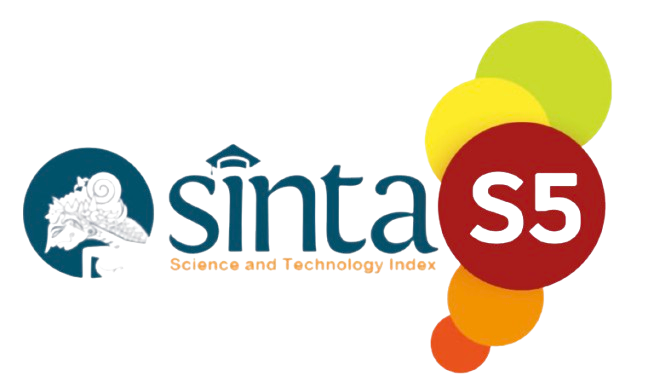An Analysis of Compound Words in Education Issue of the Jakarta Post Edition on April 2021
Keywords:
Adjectival compound, Nominal compound, Verbal compoundAbstract
In learning a language, the first thing to grasp is words. One method of word formation is compounding, which involves combining two elements from existing words to create a new word. Compounds are categorized into three groups based on the part of speech: nominal compounds, verbal compounds, and adjectival compounds. The formation of compound words gives rise to their meaning, involving two kinds of semantic headedness—namely, endocentric compounds and exocentric compounds. These compound words can be identified in articles from the education issue of The Jakarta Post edition from April 2021. The objectives of this study are as follows: (1) to identify the types of compound words; (2) to determine the semantic headedness of compound words; and (3) to calculate the percentages of compound types and semantic headedness. The study employs a qualitative descriptive method. The results reveal three types of compound words: nominal compounds (656 words), verbal compounds (2 words), and adjectival compounds (5 words). Additionally, two types of compound words were identified—650 words were endocentric compounds, and 16 words were exocentric compounds. The percentages of compound word types were as follows: 98.5% nominal compounds, 0.3% verbal compounds, and 1.2% adjectival compounds. Meanwhile, the percentages of semantic headedness were 97.60% for endocentric compounds and 2.40% for exocentric compounds. This study provides valuable information about compound words in the context of language learning.
References
Ahmmed, R. (2016). Effectiveness of reading English newspapers for improving vocabulary and reading skills of students of Dhaka University. The Millennium University Journal, 1(1), 68–76. https://doi.org/10.58908/tmuj.v1i1.8
Babalola, E. T. (2002). Newspapers as instruments for building literate communities: The Nigerian. Nordic Journal of African Studies, 11(3), 403–410.
Bérešová, J. (2022). An analysis of compounding in English. International Journal of New Trends in Social Sciences, 6(1), 15–23. https://doi.org/10.18844/ijss.v6i1.6651
Cahyani, R. R., Istinara, S. I. T., Damayanti, A. C., & Pertiwi, K. S. (2020). The derivational and compounding process in William Shakespeare’s literary works. Jadila: Journal of Development and Innovation in Language and Literature Education, 1(1), 69–84. https://doi.org/10.52690/jadila.v1i1.18
Carstairs-Mccarthy, A. (2002). An introduction to English morphology: Words and their structure. Linguistics, 160.
Christianto, D. (2020). Compound words in English. LLT Journal: A Journal on Language and Language Teaching, 23(1), 27–36. https://doi.org/10.24071/llt.v23i1.2030
Hassan, I., Ibrahim Abubakar, U., Yahaya Nasidi, Q., Latiff Azmi, M. N., & Shehu, A. (2021). Challenges and opportunities for newspapers in the age of digital communication. International Journal of Academic Research in Business and Social Sciences, 11(6). https://doi.org/10.6007/ijarbss/v11-i6/10058
Hikmaharyanti, P. D. A. (2020). Indonesian-English compound word equivalence. The International Journal of Language …, 2(01), 75–86. https://www.growingscholar.org/journal/index.php/TIJOLAC/article/view/18
Jimmi, J., & Sidauruk, J. (2020). Mastering compound word for teachers and learners of English. Wanastra: Jurnal Bahasa Dan Sastra, 12(1), 32–42. https://doi.org/10.31294/w.v12i1.7514
Jurida, S. H. (2020). Word formation in English : Derivation and compounding. Word Formation in English, 2(January 2018), 157–170.
Kamagi, S., Siwi, C. M., & Rantung, C. D. (2023). An analysis of the word formation processes in “Captain Marvel” movie. In Proceedings of the Unima International Conference on Social Sciences and Humanities (UNICSSH 2022) (Vol. 1). Atlantis Press SARL. https://doi.org/10.2991/978-2-494069-35-0_189
Khamidjanovna, K. V., Nazarovna, S. S., & Dildora, T. (2022). Formation and improvement of word usage skills in the technical field. 6(10), 4318–4322.
Kilambi, P. (2020). Compound words’ classification - A cognitive linguistic based study. International Journal of Language and Linguistics, 8(5), 216. https://doi.org/10.11648/j.ijll.20200805.14
Li, B. (2003). Studies in Interactional Linguistics (review). Language, 79(4), 820–821. https://doi.org/10.1353/lan.2003.0250
Lusekelo, A. (2019). Endocentric and exocentric compounds in Kiswahili. SKASE Journal of Theoretical Linguistics, 16(4), 22–47.
Munawarah, M., Ramli, R., & Sudirman, S. (2020). Using The Jakarta Post (Daily News) to improve academic English vocabulary of The United English Forum (UEF) members in Makassar. Bosowa Journal of Education, 1(1), 41–44. https://doi.org/10.35965/bje.v1i1.614
Napitulupu, F. (2002). Comparative study of compound words in English and Indonesian Fransiska Napitupulu. 1–39.
Pasaribu, T. A., & Nugraha, D. S. (2020). The use of lexeme HEAD in English and Indonesian compound words: A contrastive analysis. Eralingua: Jurnal Pendidikan Bahasa Asing Dan Sastra, 4(2), 133. https://doi.org/10.26858/eralingua.v4i2.13073
Plag, I. (2003). Word-formation in English. Word-Formation in English, 1–240. https://doi.org/10.1017/CBO9780511841323
Rafica Sari. (2013). Compounding in information technology terms : Bahasa & Sastra, 13(1), 12–20.
Raja, V. L. (2014). Word formation: A morphological analysis. Phenomena, 14(1), 81–86.
Ratih, E., & Gusdian, R. I. (2018). Word formation processes in English new words of Oxford English Dictionary (Oed) online. A Journal of Culture English Language Teaching Literature & Linguistics, 5(2), 24. https://doi.org/10.22219/celticumm.vol5.no2.24-35
Sharofat Abdumutaljonovna, P. (2022). Texas Journal of Multidisciplinary Studies main characteristics of advertising discourse in modern linguistics. Texas Journal of Multidisciplinary Studies, 9, 173–176. https://zienjournals.com
Syarif, H. (2016). Linguistics and the English language instruction. Lingua Didaktika: Jurnal Bahasa Dan Pembelajaran Bahasa, 10(1), 50. https://doi.org/10.24036/ld.v10i1.6328
William O'Grady, John Archibald, Mark Aronoff, Janie Rees-Miller. (2017). Contemporary Linguistics: An Introduction. (z-lib.org).














